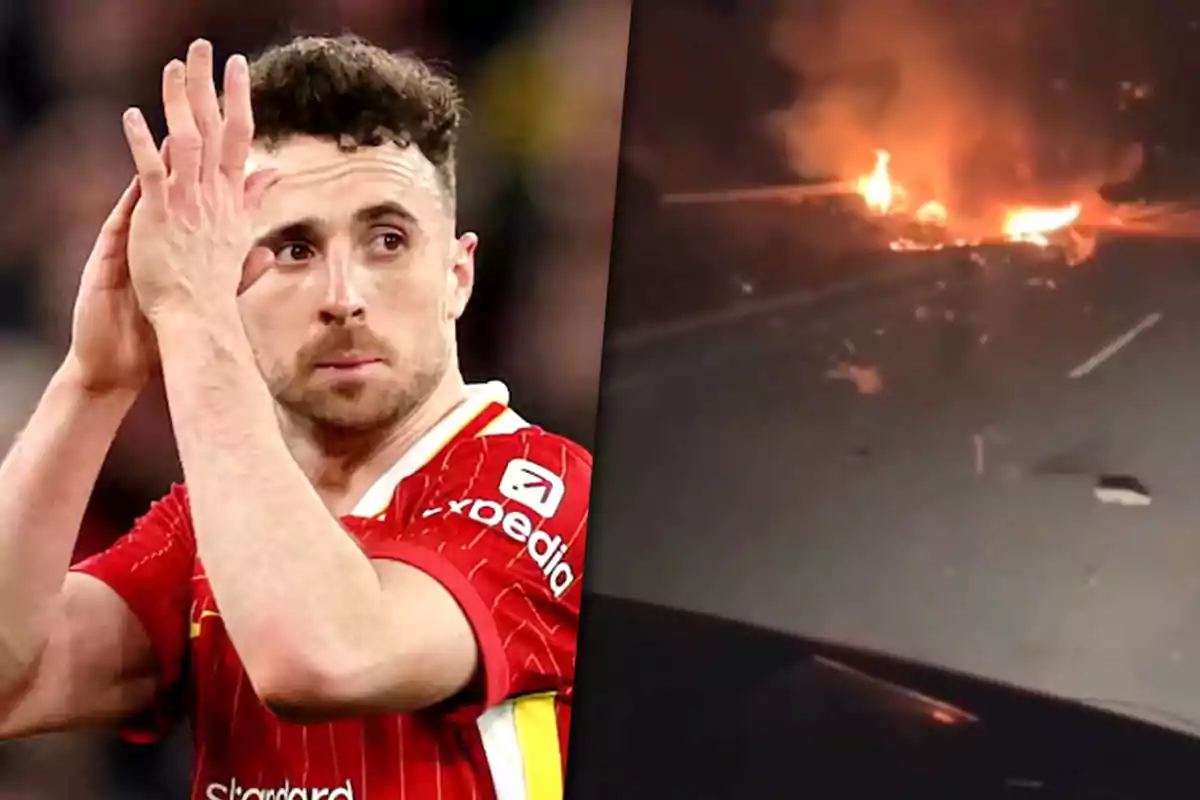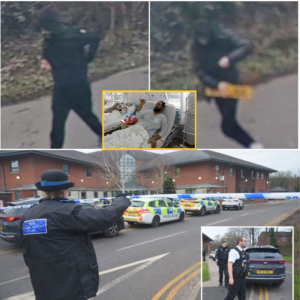On July 3, 2025, the football world was rocked by the tragic deaths of Liverpool striker Diogo Jota and his brother, André Silva, in a fiery car crash on Spain’s A-52 motorway near Cernadilla, Zamora. The 28-year-old Portuguese star and his 26-year-old sibling perished when their Lamborghini Huracán veered off the road and burst into flames, an incident initially attributed to excessive speed by Spanish authorities. As tributes poured in from fans and global figures, a startling eyewitness account has emerged, alleging the presence of a mysterious object on the crash site that police appear to have overlooked. This revelation challenges the official narrative and raises questions about the thoroughness of the ongoing investigation into the tragedy that claimed two promising lives.
The eyewitness, a truck driver traveling the A-52 that night, came forward with details that diverge from the Guardia Civil’s preliminary findings. The driver, who wishes to remain anonymous, was approximately 200 meters behind the Lamborghini when the accident occurred at around 12:30 a.m. local time. “I saw something strange on the road just before it happened,” the witness recounted to local media. “It looked like a large metal piece, maybe a debris or an object, lying in the lane they were in. Then I heard a loud bang, and the car swerved wildly.” The driver described the object as unusual for the typically clear motorway, suggesting it could have contributed to the crash. However, despite reporting this to police at the scene, the witness claims the detail was dismissed, with investigators focusing solely on speed and tire marks.
Spanish authorities have maintained that Diogo Jota was likely driving and that the vehicle was traveling significantly above the 120 km/h (75 mph) speed limit. The Guardia Civil pointed to 100-meter skid marks and the severity of the collision with a barrier as evidence, suggesting the car may have been overtaking when a tire blowout occurred. This blowout theory aligns with the eyewitness’s account of a loud explosion, but the presence of a foreign object introduces a new variable. The truck driver insists the object was large enough to pose a hazard, potentially causing or exacerbating the tire failure. Yet, no official report has addressed this claim, fueling speculation that the police may have prematurely settled on a speed-related conclusion.
The crash site near Cernadilla, a quiet stretch of the A-52 close to the Portuguese border, is not known as a high-risk area, and weather conditions were clear that night. Jota and his brother were en route to Santander to catch a ferry to England for Liverpool’s pre-season training, a journey planned after Jota’s recent lung surgery prevented him from flying. This medical context, revealed by his physiotherapist, underscores his cautious nature, further casting doubt on the speeding narrative. The eyewitness’s observation of the mysterious object suggests an external factor—road debris or a discarded item—might have played a role, a possibility that challenges the assumption of driver error.

The Lamborghini Huracán, a high-performance vehicle with low-profile tires, is particularly susceptible to punctures from road hazards. Automotive experts note that a sudden impact with a metal object could cause a catastrophic tire blowout, leading to loss of control even at moderate speeds. The witness’s description of the car swerving “wildly” after the bang supports this scenario, contrasting with the police’s emphasis on excessive velocity. Photographs from the scene, showing scattered debris and burn marks, hint at a violent tire failure, but the absence of any mention of a foreign object in official statements is conspicuous. This omission raises concerns about whether the investigation has been thorough or influenced by a desire to avoid broader liability issues.
The football community’s response has been one of profound grief. Fans gathered outside Anfield, leaving flowers and scarves, while the funeral in Gondomar saw Liverpool players Virgil van Dijk and Andy Robertson carry tributes shaped like shirts bearing Jota’s number 20 and André’s number 30. Tributes from Cristiano Ronaldo, Jurgen Klopp, and British Prime Minister Sir Keir Starmer highlighted Jota’s legacy as a 49-cap Portugal international and a key figure in Liverpool’s 2024/25 title win. Yet, amid the mourning, the eyewitness’s claim has sparked online debates, with some fans questioning whether the police are overlooking evidence to protect the motorway’s reputation or shift blame to the driver.
Critics argue that the focus on speed may reflect a convenient narrative rather than a comprehensive analysis. The A-52 is maintained by Spain’s public works department, and a hazardous object on the road could point to negligence in road safety protocols. The truck driver’s report, though unverified, aligns with occasional complaints about debris on Spanish motorways, often from overturned vehicles or construction sites. If substantiated, this could shift responsibility from Jota to infrastructure or maintenance failures, a prospect that might explain the police’s reluctance to pursue it. The Guardia Civil has promised a detailed report for the Puebla de Sanabria court, but the lack of transparency on the object claim has eroded public trust.
Forensic teams are analyzing the wreckage, including tire fragments and the car’s black box, which could reveal speed and braking data. However, the eyewitness’s assertion that the object was ignored suggests a gap in the evidence collection process. Without a thorough examination of the road surface and surrounding area, the investigation risks missing a critical piece of the puzzle. The medical team’s earlier revelation that Jota was recovering from lung surgery and unlikely to speed adds weight to the argument for a mechanical or external cause. Together, these accounts paint a picture of a cautious driver undone by unforeseen circumstances rather than reckless behavior.
The tragedy’s timing—11 days after Jota’s wedding to Rute Cardoso and shortly after becoming a father of three—deepens the sense of loss. André’s death, as a promising Penafiel midfielder, compounds the family’s sorrow. The football world has rallied, with Liverpool’s Arne Slot describing Jota as “a loved one to all of us,” and fans honoring his memory with vigils. Yet, the unresolved question of the mysterious object lingers, urging a reevaluation of the crash’s cause. If road debris was indeed a factor, it could prompt broader safety reviews, ensuring such a loss is not repeated.
As the investigation progresses, the eyewitness’s testimony serves as a call for scrutiny. The final moments—marked by a loud bang and a swerve—may reflect not just a tire blowout but an avoidable hazard ignored by authorities. This overlooked detail demands attention, compelling a deeper probe to honor Jota and his brother with the truth rather than a rushed judgment.



